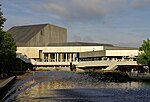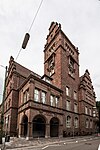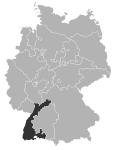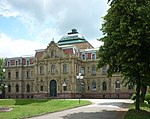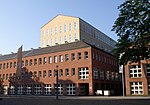Karlsruhe Zoo
1865 establishments in BadenBaden-Württemberg building and structure stubsBaden-Württemberg geography stubsBuildings and structures in KarlsruheTourist attractions in Karlsruhe ... and 3 more
Zoo stubsZoos established in 1865Zoos in Germany

Karlsruhe Zoo is located north of Karlsruhe Central Station in the city of Karlsruhe, Germany. It was opened in 1865 and is one of the oldest zoos in Germany. It has about 4,400 animals and 250 species.
Excerpt from the Wikipedia article Karlsruhe Zoo (License: CC BY-SA 3.0, Authors, Images).Karlsruhe Zoo
Poststraße, Karlsruhe Südweststadt
Geographical coordinates (GPS) Address Website External links Nearby Places Show on map
Geographical coordinates (GPS)
| Latitude | Longitude |
|---|---|
| N 48.997777777778 ° | E 8.4016666666667 ° |
Address
Zoologischer Stadtgarten (Stadtgarten Karlsruhe)
Poststraße
76137 Karlsruhe, Südweststadt
Baden-Württemberg, Germany
Open on Google Maps




